-
 Bitcoin
Bitcoin $117600
0.25% -
 Ethereum
Ethereum $4424
0.10% -
 XRP
XRP $3.101
0.50% -
 Tether USDt
Tether USDt $1.001
-0.01% -
 BNB
BNB $836.2
1.26% -
 Solana
Solana $188.8
2.11% -
 USDC
USDC $1.000
0.01% -
 Dogecoin
Dogecoin $0.2301
0.57% -
 TRON
TRON $0.3485
-1.00% -
 Cardano
Cardano $0.9209
-1.34% -
 Hyperliquid
Hyperliquid $46.72
-1.19% -
 Chainlink
Chainlink $22.62
4.84% -
 Stellar
Stellar $0.4275
-0.38% -
 Sui
Sui $3.761
1.91% -
 Bitcoin Cash
Bitcoin Cash $586.7
-0.25% -
 Ethena USDe
Ethena USDe $1.001
0.01% -
 Hedera
Hedera $0.2510
2.06% -
 Avalanche
Avalanche $24.21
2.22% -
 Litecoin
Litecoin $119.7
1.07% -
 Toncoin
Toncoin $3.450
1.06% -
 UNUS SED LEO
UNUS SED LEO $9.411
-0.93% -
 Shiba Inu
Shiba Inu $0.00001298
1.20% -
 Uniswap
Uniswap $10.98
3.25% -
 Polkadot
Polkadot $3.961
2.16% -
 Dai
Dai $1.000
0.00% -
 Bitget Token
Bitget Token $4.642
0.95% -
 Cronos
Cronos $0.1514
0.57% -
 Ethena
Ethena $0.7290
3.78% -
 Monero
Monero $254.1
7.69% -
 Pepe
Pepe $0.00001102
2.47%
How does token economics affect the value of cryptocurrencies? What core elements and mechanisms does it include?
Token economics, or tokenomics, influences cryptocurrency value through supply management, distribution strategies, and utility within ecosystems.
May 09, 2025 at 12:28 pm
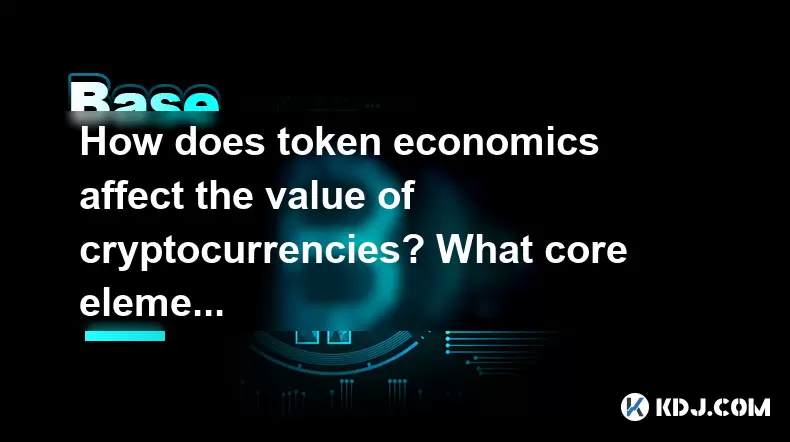
Token economics, often referred to as tokenomics, plays a crucial role in determining the value and sustainability of cryptocurrencies. Token economics encompasses the design and management of a cryptocurrency's token supply, distribution, and utility within its ecosystem. Understanding how token economics affects the value of cryptocurrencies involves delving into its core elements and mechanisms, which directly influence investor behavior, market dynamics, and the overall health of the cryptocurrency.
Token Supply and Scarcity
One of the fundamental aspects of token economics is the token supply. The total supply of tokens and the rate at which new tokens are introduced into the market can significantly impact a cryptocurrency's value. For instance, Bitcoin has a capped supply of 21 million coins, which creates a sense of scarcity and can drive up demand as the supply diminishes over time. Conversely, if a cryptocurrency has an unlimited supply or a high inflation rate, it may lead to a decrease in value due to the dilution of existing tokens.
The mechanism of halving in Bitcoin is a prime example of how token supply can affect value. Every four years, the reward for mining new blocks is halved, reducing the rate at which new Bitcoins are created. This mechanism is designed to mimic the scarcity of precious metals like gold, thereby potentially increasing Bitcoin's value as the supply growth slows down.
Token Distribution and Allocation
Token distribution refers to how tokens are initially allocated and subsequently distributed among various stakeholders, such as founders, investors, and the community. A well-thought-out distribution strategy can enhance the perceived fairness and legitimacy of a cryptocurrency, which in turn can positively affect its value.
For example, Ethereum conducted an Initial Coin Offering (ICO) to distribute its tokens, allowing early adopters and investors to purchase Ether. The success of Ethereum's ICO and its subsequent distribution to developers and users helped establish a strong community and ecosystem, contributing to its value.
Allocation of tokens to different purposes, such as development, marketing, and reserves, also plays a critical role. If a significant portion of tokens is allocated to the development team without a clear vesting schedule, it may raise concerns about potential sell-offs, which could negatively impact the token's value.
Token Utility and Use Cases
The utility of a token within its ecosystem is another crucial element of token economics. Tokens that have clear and practical use cases tend to have higher perceived value. For instance, Ethereum's Ether is used to pay for transaction fees and computational services on the Ethereum network, making it an integral part of the ecosystem.
Decentralized Finance (DeFi) platforms often use tokens to govern their protocols, provide staking rewards, or serve as collateral. The more utility a token has, the more demand it can generate, which can positively affect its value. For example, Compound's COMP token allows holders to participate in governance decisions, incentivizing users to hold and use the token within the platform.
Incentive Structures and Staking
Incentive structures are designed to encourage certain behaviors within a cryptocurrency's ecosystem. Staking, for instance, is a mechanism where users can lock up their tokens to support the network's operations and, in return, receive rewards. This not only helps secure the network but also reduces the circulating supply of tokens, potentially increasing their value.
Tezos is an example of a cryptocurrency that uses staking to incentivize participation. Users can stake their Tezos (XTZ) tokens to participate in the network's consensus mechanism and earn additional tokens. This system encourages long-term holding and can contribute to the token's value by reducing the available supply.
Token Burning and Buyback Programs
Token burning is a mechanism where a portion of the token supply is permanently removed from circulation. This can be done to increase scarcity and potentially drive up the value of the remaining tokens. For example, Binance Coin (BNB) has a quarterly burning mechanism where a portion of the profits from the Binance exchange is used to buy back and burn BNB tokens.
Buyback programs are another way to manage token supply. Companies may use profits to buy back their tokens from the market, reducing the circulating supply and potentially increasing the value of the remaining tokens. MakerDAO uses a buyback and burn mechanism for its MKR token, where surplus DAI is used to buy back and burn MKR, which can help stabilize and increase the token's value.
Market Dynamics and Investor Sentiment
Market dynamics and investor sentiment are heavily influenced by token economics. The perception of a cryptocurrency's tokenomics can drive demand and affect its value. For instance, if investors believe that a token's supply is well-managed and its utility is strong, they may be more willing to invest, driving up the price.
Conversely, if there are concerns about the token's distribution, allocation, or utility, it can lead to a decrease in demand and a drop in value. Investor sentiment can be influenced by factors such as the project's roadmap, the team's credibility, and the overall market conditions.
Regulatory Compliance and Legal Framework
Regulatory compliance and the legal framework surrounding a cryptocurrency can also impact its token economics and value. Cryptocurrencies that adhere to regulatory standards and have clear legal frameworks may be perceived as more legitimate and less risky, which can positively affect their value.
For example, Ripple's XRP has faced regulatory scrutiny, which has impacted its value and investor sentiment. Clear regulatory compliance can help mitigate such risks and enhance the perceived value of a cryptocurrency.
Frequently Asked Questions
Q: How can token economics be used to prevent inflation in a cryptocurrency?
A: Token economics can prevent inflation through mechanisms such as capping the total supply, implementing halving events, and using token burning and buyback programs. These strategies help manage the token supply and maintain its value over time.
Q: What role does community governance play in token economics?
A: Community governance allows token holders to participate in decision-making processes, which can enhance the legitimacy and sustainability of a cryptocurrency. By giving the community a say in the project's direction, it can foster a sense of ownership and loyalty, potentially increasing the token's value.
Q: How do token economics affect the long-term viability of a cryptocurrency project?
A: Token economics directly impact the long-term viability of a cryptocurrency project by influencing its supply, distribution, utility, and incentive structures. A well-designed token economy can attract and retain users, secure the network, and maintain the token's value, all of which contribute to the project's long-term success.
Q: Can token economics be adjusted after a cryptocurrency is launched?
A: Yes, token economics can be adjusted post-launch through mechanisms such as token burns, buybacks, and changes in the token's utility or incentive structures. However, such adjustments must be carefully managed to maintain trust and stability within the ecosystem.
Disclaimer:info@kdj.com
The information provided is not trading advice. kdj.com does not assume any responsibility for any investments made based on the information provided in this article. Cryptocurrencies are highly volatile and it is highly recommended that you invest with caution after thorough research!
If you believe that the content used on this website infringes your copyright, please contact us immediately (info@kdj.com) and we will delete it promptly.
- Kazakhstan's Crypto Leap: Bitcoin ETF and Central Asia's Digital Finance Future
- 2025-08-13 12:45:19
- BlockDAG Presale Blazes Past $371M: Fundraising Frenzy Fuels Crypto Sensation
- 2025-08-13 13:05:21
- Meme Coins: Chasing the 2025 Surge – Which Will Moonshot?
- 2025-08-13 10:25:23
- Bitcoin's Wild Ride: Rally, Pullback, and What's Next
- 2025-08-13 10:25:23
- Bitcoin, Bitmax, and Institutional Demand: A New Era of Crypto Investment
- 2025-08-13 10:45:12
- Solana, ROAM, and Airdrops: What's the Buzz in 2025?
- 2025-08-13 11:35:13
Related knowledge
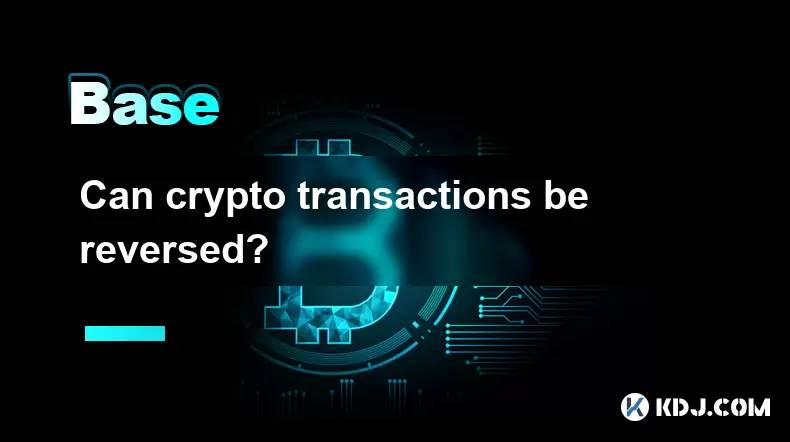
Can crypto transactions be reversed?
Aug 10,2025 at 01:35am
Understanding the Immutability of Blockchain TransactionsCryptocurrency transactions are built on blockchain technology, which is designed to be immut...

What happens if I forget my crypto wallet password?
Aug 09,2025 at 08:50am
Understanding the Role of a Crypto Wallet PasswordA crypto wallet password serves as a critical security layer that protects access to your digital as...
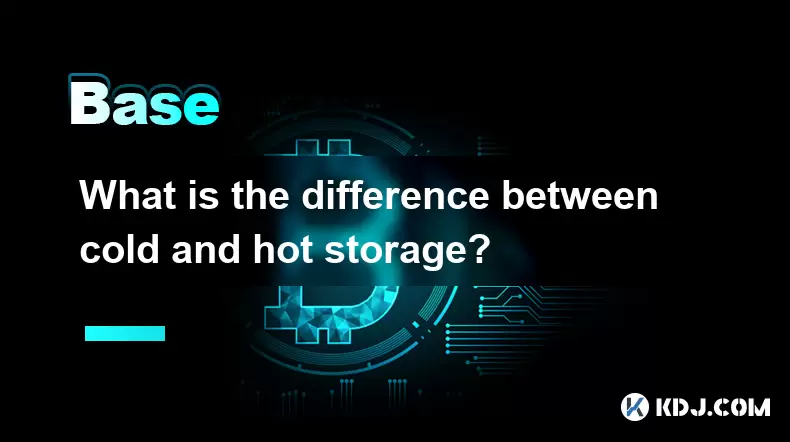
What is the difference between cold and hot storage?
Aug 12,2025 at 01:01am
Understanding Cold Storage in CryptocurrencyCold storage refers to offline methods of storing cryptocurrency private keys, ensuring they are not expos...
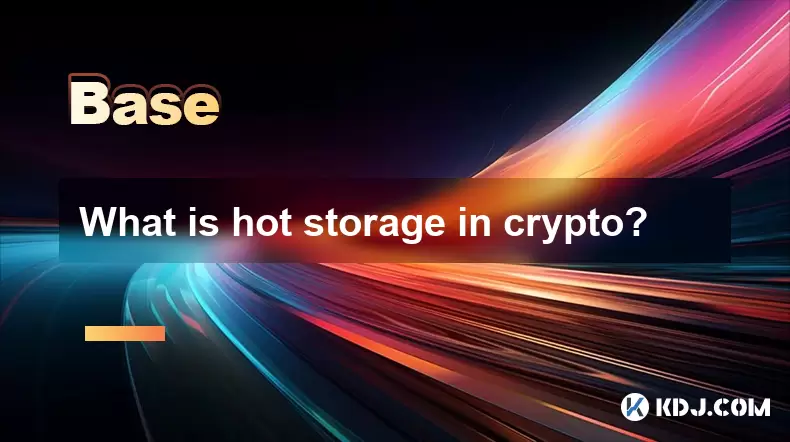
What is hot storage in crypto?
Aug 11,2025 at 07:08am
Understanding Hot Storage in CryptocurrencyHot storage refers to cryptocurrency wallets that are connected to the internet. Unlike cold storage soluti...

What is cold storage in crypto?
Aug 13,2025 at 11:35am
Understanding Cold Storage in CryptocurrencyCold storage in cryptocurrency refers to a method of storing digital assets offline, away from internet-co...
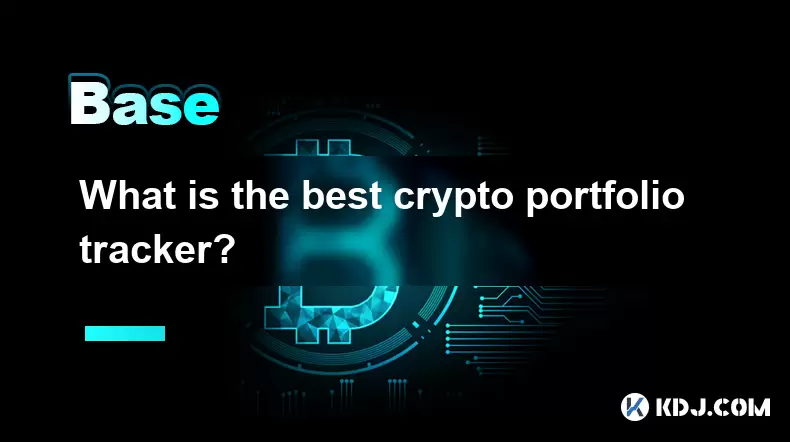
What is the best crypto portfolio tracker?
Aug 10,2025 at 05:08am
Understanding the Role of a Crypto Portfolio TrackerA crypto portfolio tracker is a digital tool designed to help investors monitor the performance of...

Can crypto transactions be reversed?
Aug 10,2025 at 01:35am
Understanding the Immutability of Blockchain TransactionsCryptocurrency transactions are built on blockchain technology, which is designed to be immut...

What happens if I forget my crypto wallet password?
Aug 09,2025 at 08:50am
Understanding the Role of a Crypto Wallet PasswordA crypto wallet password serves as a critical security layer that protects access to your digital as...

What is the difference between cold and hot storage?
Aug 12,2025 at 01:01am
Understanding Cold Storage in CryptocurrencyCold storage refers to offline methods of storing cryptocurrency private keys, ensuring they are not expos...

What is hot storage in crypto?
Aug 11,2025 at 07:08am
Understanding Hot Storage in CryptocurrencyHot storage refers to cryptocurrency wallets that are connected to the internet. Unlike cold storage soluti...

What is cold storage in crypto?
Aug 13,2025 at 11:35am
Understanding Cold Storage in CryptocurrencyCold storage in cryptocurrency refers to a method of storing digital assets offline, away from internet-co...

What is the best crypto portfolio tracker?
Aug 10,2025 at 05:08am
Understanding the Role of a Crypto Portfolio TrackerA crypto portfolio tracker is a digital tool designed to help investors monitor the performance of...
See all articles

























































































